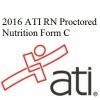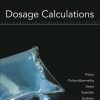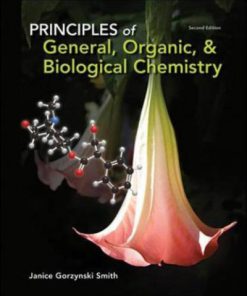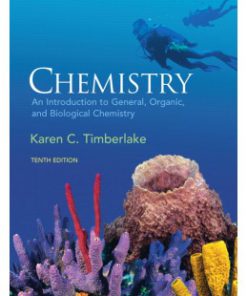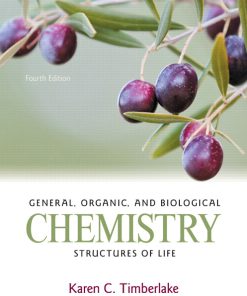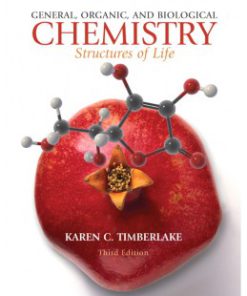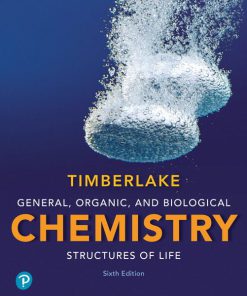General Organic and Biological Chemistry Structures of Life 5th Edition Timberlake Test Bank
$35.00 Original price was: $35.00.$26.50Current price is: $26.50.
General Organic and Biological Chemistry Structures of Life 5th Edition Timberlake Test Bank
Instant download General Organic and Biological Chemistry Structures of Life 5th Edition Timberlake Test Bank pdf docx epub after payment.
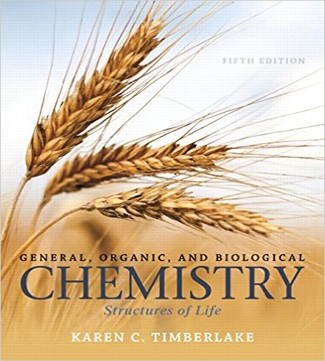
Chapter 3 Energy and Matter
3.1 Multiple-Choice Questions
1) Helium is a(n)
A) compound.
B) heterogeneous mixture.
C) element.
D) homogeneous mixture.
E) electron.
Answer: C
Objective: 3.1
Global Outcomes: GO2
2) Air is a(n)
A) compound.
B) heterogeneous mixture.
C) element.
D) homogeneous mixture.
E) None of the above.
Answer: D
Objective: 3.1
Global Outcomes: GO7
3) Coins in a piggy bank is a(n)
A) compound.
B) heterogeneous mixture.
C) element.
D) homogeneous mixture.
E) None of the above.
Answer: B
Objective: 3.1
Global Outcomes: GO2
4) Gold in a wedding ring is a(n)
A) compound.
B) heterogeneous mixture.
C) element.
D) homogeneous mixture.
E) None of the above.
Answer: C
Objective: 3.1
Global Outcomes: GO2
5) The primary substances of which all other things are composed are
A) molecules.
B) compounds.
C) elements.
D) electrons.
E) protons.
Answer: C
Objective: 3.1
Global Outcomes: GO2
6) Which of the following is a property of a solid?
A) It takes the shape of the container.
B) It fills the volume of the container.
C) The particles move at a rapid rate.
D) The interactions between its particles are very weak.
E) The particles have fixed positions and are very close together.
Answer: E
Objective: 3.2
Global Outcomes: GO2
7) Which of the following is a physical property of both liquids and gases?
A) has its own shape
B) has a definite volume
C) has strong interactions between its particles
D) has randomly arranged particles
E) has large spaces between molecules
Answer: D
Objective: 3.2
Global Outcomes: GO2
8) Which one of the following properties describes a liquid?
A) has its own shape
B) particles are close together and move randomly
C) particles move very rapidly
D) fills the entire volume of the container
E) There is essentially no interaction between the particles.
Answer: B
Objective: 3.2
Global Outcomes: GO2
9) In a gas, the distance between the particles is
A) very close relative to the size of the molecules.
B) close relative to the size of the molecules.
C) fixed relative to the size of the molecules.
D) small relative to the size of the molecules.
E) very large relative to the size of the molecules.
Answer: E
Objective: 3.2
Global Outcomes: GO2
10) Which of the following is an example of a physical change?
A) grinding coffee beans
B) baking a cake
C) converting water to hydrogen and oxygen
D) digesting a cheeseburger
E) burning coal
Answer: A
Objective: 3.2
Global Outcomes: GO2
11) Which of the following would NOT be a physical change?
A) freezing water to make ice cubes
B) tearing a piece of aluminum foil
C) boiling water for soup
D) burning gasoline in a lawnmower
E) melting gold to make jewelry
Answer: D
Objective: 3.2
Global Outcomes: GO2
12) Which of the following is a chemical change?
A) cutting a rope
B) bending a steel rod
C) making a snowman
D) burning sugar
E) melting gold
Answer: D
Objective: 3.2
Global Outcomes: GO2
13) Which of the following is a physical change?
A) baking a cake
B) dry ice subliming
C) fermenting grapes to produce wine
D) digesting a meal
E) a tomato ripening
Answer: B
Objective: 3.2
Global Outcomes: GO2
14) A temperature of 41 °F is the same as
A) 5 °C.
B) 310 °C.
C) -9 °C.
D) 16 °C.
E) 42 °C.
Answer: A
Objective: 3.3
Global Outcomes: GO4
15) If the temperature is 20 °C, what is the corresponding temperature on the Fahrenheit scale?
A) -22 °F
B) 68 °F
C) 43 °F
D) 239 °F
E) 94 °F
Answer: B
Objective: 3.3
Global Outcomes: GO4
16) If the temperature is – 55 °C, what is the corresponding temperature on the Kelvin scale?
A) 225 K
B) 218 K
C) 55 K
D) 273 K
E) 328 K
Answer: B
Objective: 3.3
Global Outcomes: GO4
17) A patient has a temperature of 38.5 °C. What is the temperature in degrees Fahrenheit?
A) 70.5 °F
B) 311 °F
C) 126.9 °F
D) 101.3 °F
E) 11.7 °F
Answer: D
Objective: 3.3
Global Outcomes: GO4
18) The temperature of liquid nitrogen is – 196 °C. What is the corresponding reading on the Kelvin scale?
A) 77 K
B) -127 K
C) -91 K
D) 48 K
E) 146 K
Answer: A
Objective: 3.3
Global Outcomes: GO4
19) On a hot day, the thermometer read 95 °F. What is the temperature in degrees Celsius?
A) 77 °C
B) 113 °C
C) 35 °C
D) 63 °C
E) 178 °C
Answer: C
Objective: 3.3
Global Outcomes: GO4
20) Absolute zero is
A) the freezing point of water using the Celsius scale.
B) the boiling point of liquid nitrogen.
C) the temperature on the Kelvin scale corresponding to 32 °F.
D) the coldest temperature possible.
E) the freezing point of liquid nitrogen.
Answer: D
Objective: 3.3
Global Outcomes: GO7
21) 650. J is the same amount of energy as
A) 155 cal.
B) 2720 cal.
C) 650 cal.
D) 1550 cal.
E) 2.72 cal.
Answer: A
Objective: 3.4
Global Outcomes: GO4
22) The energy associated with the motion of particles in a substance is called
A) temperature.
B) electrical energy.
C) heat.
D) chemical energy.
E) potential energy.
Answer: C
Objective: 3.4
Global Outcomes: GO7
23) An example of kinetic energy is
A) a coiled spring.
B) running water.
C) a tree.
D) natural gas.
E) chemical energy.
Answer: B
Objective: 3.4
Global Outcomes: GO7
24) Which of the following is an example of potential energy?
A) chewing food
B) water stored in a reservoir
C) burning wood
D) a fan blade turning
E) riding an exercise bike
Answer: B
Objective: 3.4
Global Outcomes: GO2
25) The phrase “ability to do work” is a definition of
A) specific heat.
B) energy.
C) calorie.
D) heating.
E) cooling.
Answer: B
Objective: 3.4
Global Outcomes: GO7
26) The energy stored in the chemical bonds of a carbohydrate molecule is
A) specific heat.
B) kinetic energy.
C) potential energy.
D) work.
E) a calorie.
Answer: C
Objective: 3.4
Global Outcomes: GO2
27) The energy of motion is referred to as
A) work.
B) freezing.
C) specific heat.
D) potential energy.
E) kinetic energy.
Answer: E
Objective: 3.4
Global Outcomes: GO2
28) In which of the following would the particles move most rapidly?
A) ice at -20 °C
B) water at 20 °C
C) steam at 110 °C
D) boiling water
E) ice at 0 °C
Answer: C
Objective: 3.4
Global Outcomes: GO2
29) 3.25 kcal is the same amount of energy as
A) 3.25 J.
B) 0.777 J.
C) 777 J.
D) 13600 J.
E) 13.6 J.
Answer: D
Objective: 3.4
Global Outcomes: GO4
You may also like…
Test Bank
Test Bank for Chemistry General Organic and Biological 10th Edition Karen Timberlake Download


